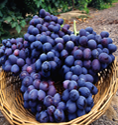Garlic side effects
Considering the fact that garlic has been an integral part of our diet for centuries, it is taken for granted that garlic is safe in a wide range of doses. But a few isolated reports highlight some of the adverse and toxic effects of garlic.
Animal study
Higher concentrations of garlic extract have been shown to be clastogenic [158] in mice, which was appreciably reduced at lower concentrations. Prolong feeding of high levels of raw garlic in rats has resulted in anemia, weight loss and failure to grow due to lysis of red blood cells [159]. Raw garlic juice at a dose of 5 ml/kg has resulted in death of rats due to stomach injury [160]. Surviving rats exhibited swelling of the liver, hypertrophy of the spleen and adrenal glands, and the decrease of erythrocyte count with various morphological changes after 3 and 8 days. Aqueous garlic extract (200 gm/l drinking water) for 10 days exhibited significantly higher levels of aspartate aminotransferase (AST) due to liver injury. Histopathological examination of liver showed focal nonspecific injury with inflammatory cell infiltration in hepatocytes [161]. Chen et al., (1999) have reported that treatment of rats with fresh garlic homogenate for 7 days caused a significant decrease in liver catalase activity in doses of 2 and 4 gm/kg [162]. The ultrastructural study carried out in our laboratory revealed significant loss of normal cellular architecture of heart, liver and kidneys after 30 days feeding of raw garlic homogenate at 1000 mg/kg/day dose [143,144]. Feeding of allicin (100 mg/kg/day) for 15 days in rats increased the activity of liver lipase and alpha glucal phosphorylase and decreased glucose-6-phosphatase activity [163]. The exact mechanism of such garlic induced alteration in cell structure and function is not clear.
There is also some reported toxicity with garlic powder. Chronic administration of garlic powder (50 mg/day) resulted in inhibition of spermatogenesis in rats. Reduced concentration of sialic acid in the testes, epididymis and seminal vesicles together with decreased leydig cell function reflects antiandrogenic effect of garlic [164]. Higher concentration of garlic powder (200 mg/ml) or allicin isolated from garlic caused considerable cell injuries in the porta hepatis zone in isolated perfused rat liver [165], which was not observed at a lower concentration. Another in vitro study showed that diallyl sulfide (oxidized product of allicin) at 5 mM significantly decreased cell viability in liver [166].
Garlic oil fed at a dose of 100 mg/kg after 24 hour fasting has also been found to be lethal. The cause of death appears to be acute pulmonary edema with severe congestion [161]. Garlic oil and Diallyl-disulfide (200 mg/kg b.w.) significantly reduced body weight gain of rats [167]. Ajoene, a garlic derived natural compound, present in other types of garlic oil, is an inhibitor as well as a substrate of human glutathione reductase and expected to increase the oxidative stress of the respective cell [168].
All the above mentioned toxicity reports can not be explained to its fullest extent but the sulphoxides present in the garlic extract can undergo exchange reaction with the tritable SH-groups of enzymes and other proteins in the body spontaneously at physiological pH and temperature, inhibiting their activity. Garlic has been demonstrated to inhibit the alkaline phosphatase [161], papain, and alcohol dehydrogenase [169]. These enzyme interactions with garlic components may be a reason for its toxicity.
Human study
Relatively few side effects were reported in clinical studies using garlic and its preparations. Most of the reported side effects were non-specific. Gastrointestinal discomfort and nausea were the most frequent complaint [170]. A survey by Koch (1995) showed that allergic reactions to garlic were reported in a total of 39 publications between 1938 and 1994 [171]. Most of these cases involved an allergic contact dermatitis, sometimes severe [172], which has been reported in people with occupational exposure to garlic. There have also been sporadic reports of allergic conjunctivitis, rhinitis, or bronchospasms occurring in response to garlic inhalation or ingestion [173,174]. Other reported side effects included bloating, headache, dizziness, and profuse sweating [170]. Ingestion of fresh garlic and garlic powder may have additive effects with anticoagulants or platelet aggregation inhibitors, leading in one case to a life-threatening hemorrhage [175-179].
Conclusion
Epidemiological study shows an inverse correlation between garlic consumption and reduced risk of cardiovascular disease progression [180–182]. The wealth of scientific literature supports the proposal that garlic consumption have significant cardioprotective effect, which include both animal and human studies. But certain issues regarding the proper use of garlic, i.e use of different preparations available, dose, duration and interaction with generic drugs should be optimized. Further research should also be carried out to identify specific compounds from garlic or garlic products that are responsible for most of its biological effects.
__________________________________________________________
Author's contribution
SKB carried out the extensive search and compilation of the review article. SKM participated in its design, coordination and drafting the manuscript.
Acknowledgements
The authors are thankful to Council for Scientific & Industrial Research (CSIR), Government of India, for financial support for this work.
Sanjay K Banerjee and Subir K Maulik
Departments of Pharmacology, All India Institute of Medical sciences, New Delhi – 110029, India
E-mail: Sanjay K Banerjee,
Nutrition Journal 2002, 1:4 doi:10.1186/1475-2891-1-4
The electronic version of this article is the complete one and can be found online at: http://www.nutritionj.com/content/1/1/4
© 2002 Banerjee and Maulik; licensee BioMed Central Ltd. This is an Open Access article: verbatim copying and redistribution of this article are permitted in all media for any purpose, provided this notice is preserved along with the article's original URL.
_________________________________________________________



